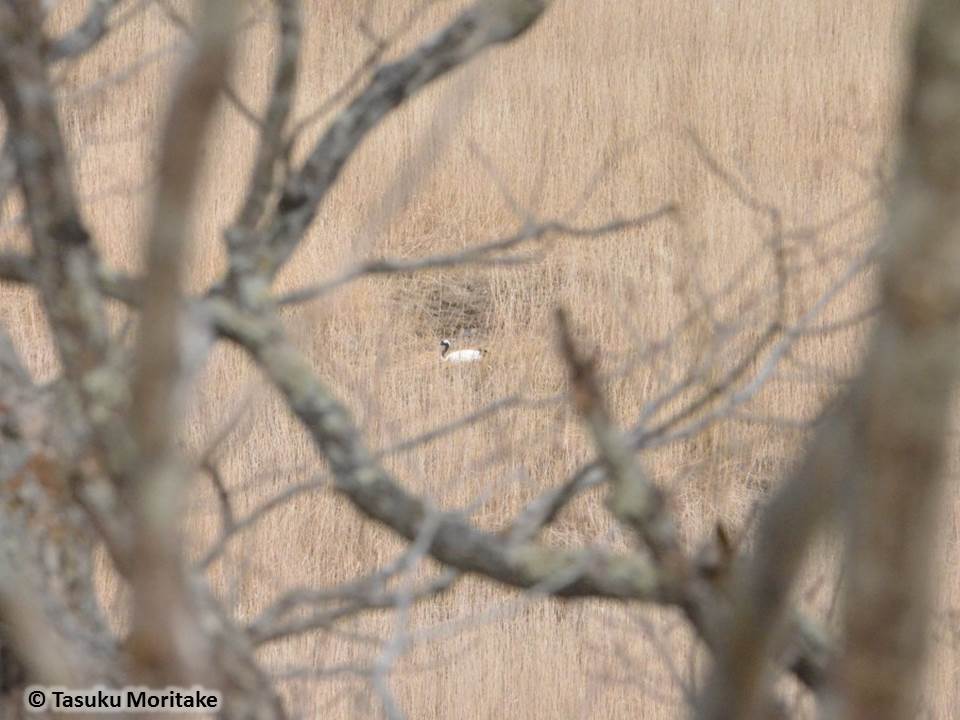
Biology
For centuries, the red-crowned crane has been revered as a symbol of good
luck and longevity in countries in East Asia. However, there are only about
4000 wild red-crowned cranes in the world.

Endangered
The species is included in the IUCN Red List by the International Union for Conservation of Nature and also the Red Data Book by the Ministry of the Environment (Japan).
The species is included in the IUCN Red List by the International Union for Conservation of Nature and also the Red Data Book by the Ministry of the Environment (Japan).
Populations
There are two populations: a non-migratory island population in NE Japan (Hokkaido) and a migratory continental population that breeds in SE Russia and NE China and winters in E China and the Korean Peninsula.

There are two populations: a non-migratory island population in NE Japan (Hokkaido) and a migratory continental population that breeds in SE Russia and NE China and winters in E China and the Korean Peninsula.


Nesting habitat
Typical nesting habitat is open wetlands; however, some nests can be found in wooded wetlands. Most nests are mounds of dead reeds in the water and are surrounded by dense vegetation.
Typical nesting habitat is open wetlands; however, some nests can be found in wooded wetlands. Most nests are mounds of dead reeds in the water and are surrounded by dense vegetation.
 Eggs & chicks
Eggs & chicks
An adult female lays one to two eggs each spring. The egg hatches in about 32 days. The downy chick begins to follow the parents in four to five days.

Young birds
Parents and the chick gradually increase their home range. It takes more than three months before the young crane is able to fly with the parents.
Parents and the chick gradually increase their home range. It takes more than three months before the young crane is able to fly with the parents.
 Wintering habitats
Wintering habitats
The young crane spends its first winter with its parents. The cranes use a range of habitats in winter. They prefer shallow rivers and streams with open water for roosting. In early spring, the parents chase away their young prior to nest building.

Food
The cranes are omnivorous. They feed on vertebrates such as mice, small fish, and frogs, invertebrates such as crayfish, snails, crabs, earthworms and insects as well as grain and other plant matter.
The cranes are omnivorous. They feed on vertebrates such as mice, small fish, and frogs, invertebrates such as crayfish, snails, crabs, earthworms and insects as well as grain and other plant matter.
 Behavior
Behavior
Red-crowned cranes are known for their beautiful courtship dances and unison calls. The best time to observe the dance is in February and March.
What is in the name?
The red-crowned crane is also known as the Japanese crane or Manchurian crane. Its scientific name is Grus japonensis. A native people of Hokkaido, the Ainu people, called it the Sar-or-un-kamuy (the god of wetland). In contemporary Japanese, it is called Tancho (丹頂: red crown), and Tancho is also recognized outside of Japan. In Chinese, it is called Dāndǐng Hè (丹頂鶴/丹顶鹤: red-crowned crane). In Korean, it is called Durumi (두루미: the crane). In Russian, it is called Yaponski Zhuravl (Японский журавль: Japanese crane).
タンチョウ保護研究グループタンチョウ保護研究グループ
〒085-0036
北海道釧路市若竹町9-21
TEL 0154-22-1993
FAX 0154-22-1993
Red-crowned Crane Conservancy
9-21 Wakatake-Cho,
Kushiro, Hokkaido 085-0036
JAPAN
TEL +81-154-22-1993
FAX +81-154-22-1993
あなたは
番目の訪問者です。